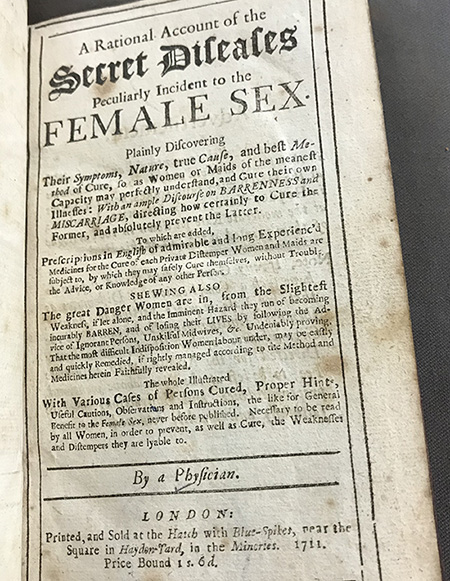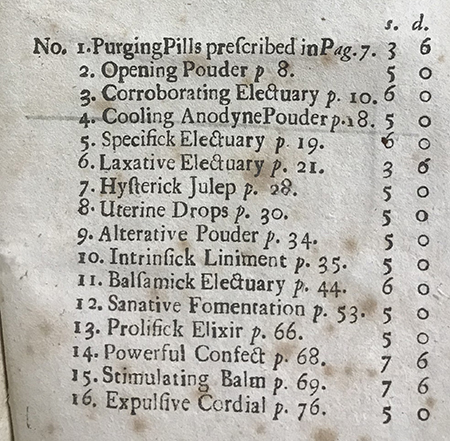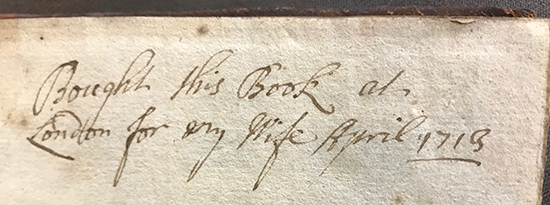Related pages
Women’s book ownership and use: Anne Smyth, Elizabeth Grey, and a new research opportunity
Drawing on the rich resources of the RCP library and archives a new doctoral research project at the RCP will investigate how women used and shared medical knowledge in the 16th, 17th and 18th centuries.
'From her truly affectionate friend'
This lengthy inscription is found in a copy of surgeon Richard Wiseman’s Severall chirurgical treatises (1676) in the RCP library. It shows that this grisly book was owned by Jane Hatcher, née Hussey (1657–1735), granddaughter-in-law of Thomas Hatcher (c.1589–1677) of Lincolnshire.
‘Like a ghost…’: women in the archives of the Royal College of Physicians
The RCP’s current exhibition, This vexed question, includes several documents from our archives that help tell the history of women in medicine. Assistant Archivist, Felix Lancashire, delves into the records to see what our archives reveal about the RCP’s attitude to women in medicine and women’s health over the last 500 years.



